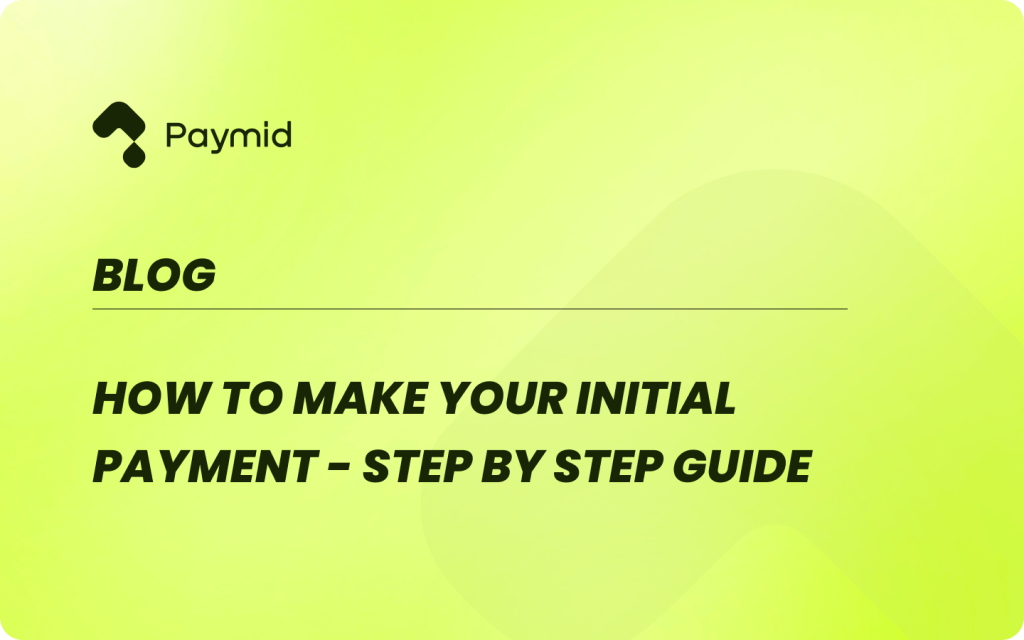How to Make Your Initial Payment: A Step-by-Step Guide

Making an initial payment can be a crucial step in many financial transactions. Whether for a large purchase, a service contract, or an option agreement, understanding how to execute this first payment properly is essential. The initial payment often sets the tone for the entire transaction and can impact the overall payment schedule.
An initial payment, also known as an upfront payment or deposit, is a sum of money paid at the beginning of a contract or transaction. It serves as a demonstration of the buyer’s commitment and helps mitigate the seller’s risk[1]. This payment is typically a percentage of the total cost of goods or services to be delivered. There are various types of initial payments, depending on the nature of the transaction: Initial payments play a crucial role in many financial transactions: Understanding initial payments is essential for managing finances effectively, whether you’re a business owner or an individual. By grasping their purpose and implications, both buyers and sellers can make informed decisions and negotiate favorable terms in their transactions. To make an initial payment, one needs to collect essential details. This includes the payment amount, due date, and acceptable payment methods[3]. It’s crucial to have the correct account information or routing numbers for electronic transfers. For option agreements or bid deposits, understanding the terms and conditions is vital. Determining the initial payment amount depends on various factors. For annual payments, it might be a percentage of the total cost. In real estate transactions, it could be earnest money or a down payment. The payment amount for option agreements may vary based on the contract terms. It’s essential to confirm the exact figure with the payee to avoid discrepancies[4]. Selecting the right payment method is crucial for a smooth transaction. Common options include: Each method has its pros and cons. Electronic transfers are often preferred for larger sums due to their security and traceability. Credit cards might offer rewards but could incur additional fees. Checks are still accepted in many cases but may take longer to process. When making an upfront payment or installment payment, it’s important to consider processing times. Some methods, like wire transfers, are almost instantaneous, while others may take several business days to clear. Always confirm the preferred payment method with the recipient to ensure a timely and hassle-free transaction[5]. To make an initial payment online, customers should follow these steps: For added security, many online payment systems use 3D Secure 2.0 (3DS2) authentication. This process may require additional verification, such as entering a code sent to your mobile device or using biometric authentication[6]. When making an upfront payment in person, follow these steps: For those who prefer to make their initial payment by mail: Remember to allow sufficient time for mail processing and avoid sending cash through the mail. After making an initial payment, it’s important to obtain confirmation. This verification serves as proof that the transaction has been successfully processed and completed. Payment confirmations typically include essential details such as the payment amount, transaction date, and reference number. Most payment gateways automatically generate these confirmations, which can be sent via email, SMS, or in-app notifications. For online payments, customers should ensure they receive a confirmation message on the screen and wait for an email confirmation[7]. When making payments in person, always request a receipt as proof of the initial payment. Maintaining accurate records of initial payments is essential for financial clarity and regulatory compliance[8]. To keep organized payment records: Proper documentation not only helps in managing cash flow but also builds trust with stakeholders and ensures compliance with tax regulations. If a payment confirmation is not received promptly, it’s important to follow up. Send a polite email to the recipient inquiring about the status of the payment. Include relevant details such as the payment amount, date, and reference numbers[9]. If there’s no response, consider sending a second follow-up email acknowledging previous attempts to contact them. In cases of persistent non-response, it may be necessary to escalate the matter through appropriate channels to ensure the initial payment has been properly processed and documented[10]. Read More: Making an initial payment is a crucial step in many financial transactions, and understanding how to do it correctly can have a significant impact on the overall process. By following the steps, you can ensure a smooth and efficient payment experience. From gathering necessary information and choosing the right payment method to confirming and documenting your transaction, each stage plays a vital role in the successful completion of your initial payment. Remember, the key to a hassle-free initial payment lies in thorough preparation and attention to detail. By staying organized, keeping accurate records, and following up when needed, you can maintain financial clarity and build trust with your transaction partners. Whether you’re making a down payment on a house, securing a service contract, or entering into an option agreement, these principles will serve you well to handle your upfront payments confidently and effectively.
Understanding Initial Payments
Types of Initial Payments
Importance of Initial Payments
Preparing for Your Initial Payment
1. Gathering Necessary Information
2. Calculating the Payment Amount
3. Choosing a Payment Method
Step-by-Step Guide to Making the Payment
1. Online Payment Process
2. In-Person Payment Process
3. Payment by Mail
Confirming and Documenting Your Payment
1. Obtaining Payment Confirmation
2. Keeping Payment Records
3. Following Up if Necessary
Are You Prepared for a Smooth Initial Payment?
References
[1] – ValleyFirstCU – Make Initial Payments. https://www.valleyfirstcu.org/make-payment

